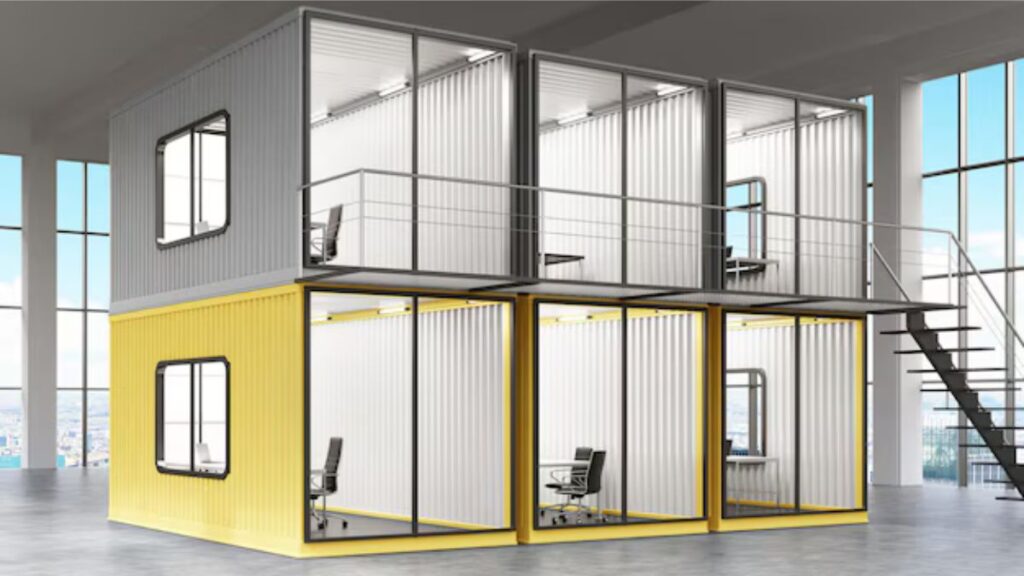Table of Contents
- Introduction to Shipping Container Workspaces
- Benefits of Using Shipping Containers in Office Design
- Key Design Considerations for Shipping Container Offices
- Unique Workspace Examples Worldwide
- Sustainability and Environmental Impact
- Cost-Effectiveness of Container Offices
- Future Trends in Container-based Workspaces
- Conclusion and Final Thoughts
Introduction to Shipping Container Workspaces
Initially designed to transport goods across vast oceans, shipping containers are experiencing a fascinating transformation. These robust metal boxes are being repurposed into innovative workspaces that redefine modern office environments. The concept of a shipping container office is gaining traction for its unique blend of functionality and creativity. As businesses seek flexible and sustainable solutions, shipping container offices offer an exciting alternative to traditional office spaces.
Why are these compact structures becoming so popular? Their growing appeal lies in their ability to adapt seamlessly to various uses while maintaining a fresh, contemporary edge. Shipping container offices are practical and serve as a statement of cutting-edge design thinking. This rise in prominence reflects a broader shift toward sustainability and efficiency in workplace environments where style and substance meet in perfect harmony.
Benefits of Using Shipping Containers in Office Design
One of the standout benefits of using shipping containers in office design is their unparalleled flexibility. These containers are modular by nature, allowing for easy customization and creative layout designs. Unlike traditional office structures, container offices can be configured in numerous ways, accommodating a business’s unique needs. This adaptability makes them an attractive option in a world that values agility and quick adaptation to change.
Time efficiency is another significant advantage. Constructing a shipping container office is often much faster than building a conventional office space. The streamlined construction allows businesses to move into their new workspace rapidly, reducing downtime and labor costs. This speed and efficiency are crucial for companies that need to expand quickly. Explore more about the design flexibility of modular buildings to see how these structures can suit various needs.
Key Design Considerations for Shipping Container Offices
Meticulous planning is necessary to realize the full potential of a shipping container workplace. Optimizing space is essential to creating a welcoming and valuable space. Good layouts may make the most of every inch of available space and turn a small area into a productive workspace. Careful planning guarantees that comfort and usefulness are not sacrificed in these small areas.
Climate control and insulation are other important factors, particularly in areas with harsh weather. Appropriate insulation solutions ensure a comfortable indoor environment and improve overall energy efficiency by lowering the demand for significant heating and cooling systems. By investing in high-quality insulation, businesses can save energy expenses and provide a comfortable working environment.
Unique Workspace Examples Worldwide
Shipping container offices have inspired designers and entrepreneurs worldwide, resulting in various creative projects. These workspaces offer a refreshing alternative to conventional office buildings in the bustling heart of cities. From vibrant start-up hubs to serene artist studios, the versatility of container offices is on full display.
One notable example is a tech company that transformed multiple shipping containers into a chic, interconnected office space. The design boasts collaborative zones and private meeting areas, showcasing how containers can provide innovative solutions for modern businesses. Such creative container transformations highlight these structures’ endless possibilities in different contexts.
Sustainability and Environmental Impact
Opting for a shipping container office is not just a trend but a commitment to sustainability. Repurposing containers reduces construction waste, minimizing the environmental footprint often associated with new building projects. Utilizing existing containers reduces the demand for raw materials, aligning with global efforts to promote eco-friendly practices.
These workspaces contribute to sustainable urban development by intelligently using resources and positioning businesses as active participants in environmental conservation. Companies demonstrate their dedication to green practices by choosing container offices, paving the way for a more sustainable future.
Cost-Effectiveness of Container Offices
Shipping container offices are often more cost-effective compared to traditional buildings. The initial setup costs are typically lower due to reduced material expenses and labor requirements. Furthermore, their rapid construction translates to financial savings, allowing businesses to allocate resources more efficiently.
Over the long term, container offices are cost-effective due to their durability and minimal maintenance needs. The robust design of shipping containers ensures they withstand environmental challenges, offering a reliable and long-lasting workspace solution for businesses seeking value for money.
Future Trends in Container-based Workspaces
As technology and design innovation converge, the potential for container-based workspaces continues to expand. Emerging technologies in utility installation and innovative office solutions make these offices more sophisticated and user-friendly.
Industries ranging from technology to retail are increasingly adopting solutions, drawn to their adaptability and modern aesthetic. This trend is expected to persist and grow, transcending transient design fads as more businesses recognize the value of these dynamic work environments.
Conclusion and Final Thoughts
Shipping container offices are revolutionizing workspaces. They offer a blend of innovation, sustainability, and practicality. As businesses pursue novel solutions to traditional challenges, these offices provide a new perspective on workplace design and utilization.
By considering a shipping container office, companies engage in a creative and environmentally conscious approach, illustrating that combining cutting-edge design with sustainable practices is possible. This forward-thinking attitude meets today’s needs and paves the way for a more adaptive and eco-friendly future.







